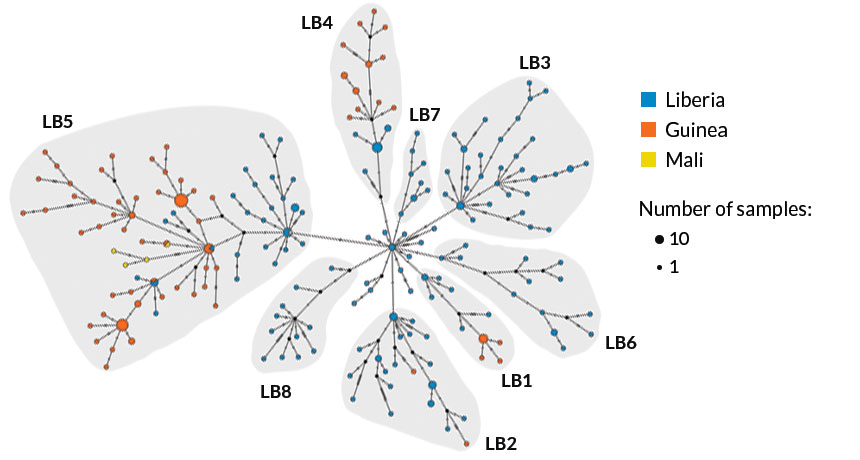
BRANCHING OUT In Liberia, a single lineage of Ebola virus (middle dot) split into subgroups as it passed from person to person and mutated. Each dot is a slightly different version of the virus within the subgroups. Dot size indicates how many people carried that version. Researchers tracked the virus as it spread from Liberia (blue) into Guinea (red) and Mali (yellow).
J.T. Ladner et al/Cell Host & Microbe 2015






